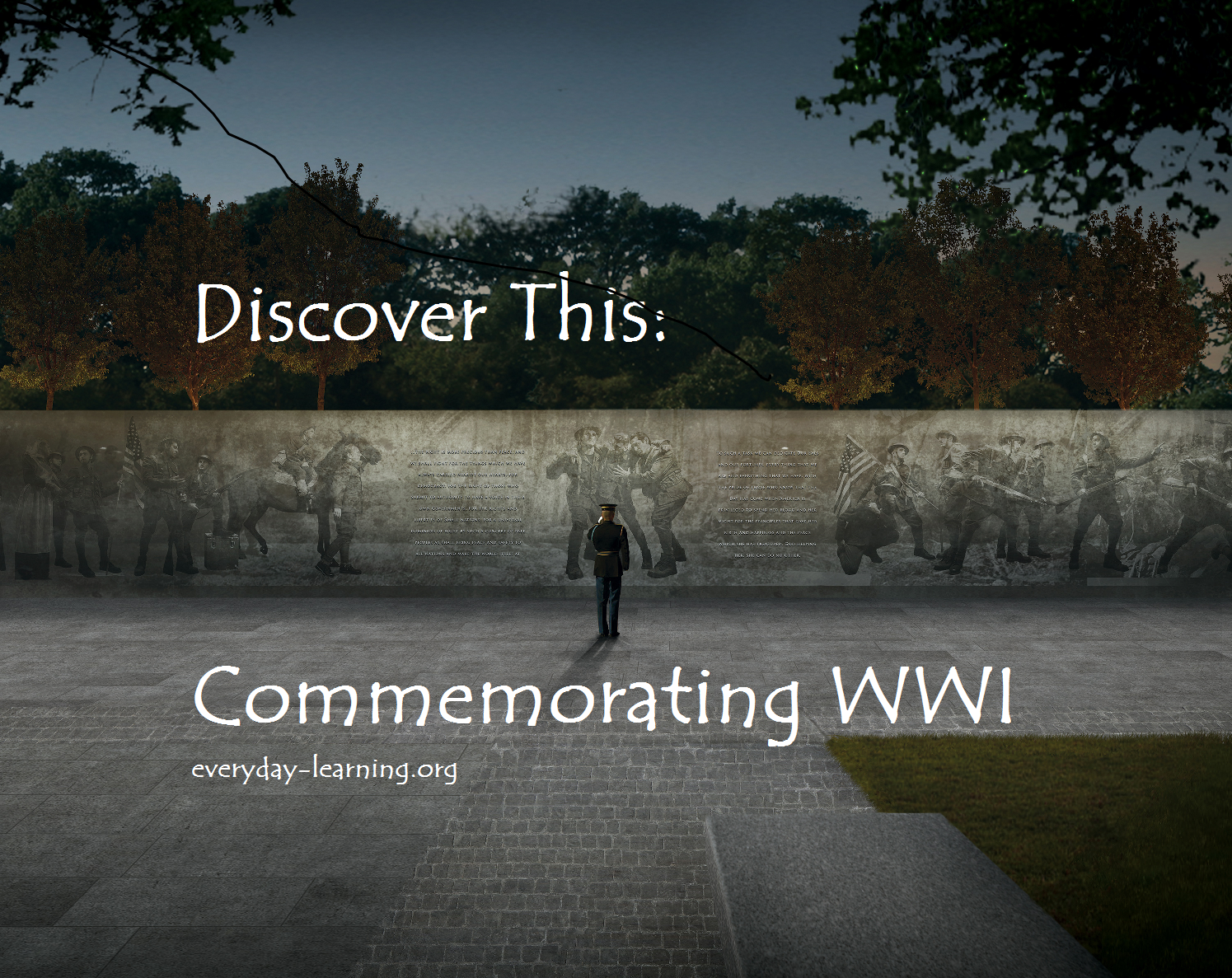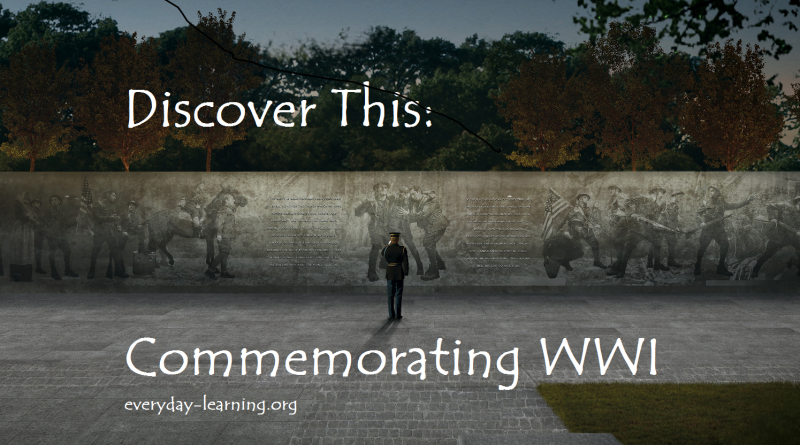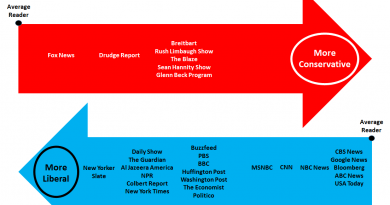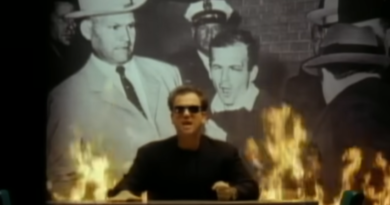Discover This: WWI Memorial

World War 1 was supposed to be the war to end all wars. It was the largest scale war the world had ever seen, up to that point. In the days that America fought, our country lost almost 200 soldiers (on average) each day.
Honoring the service and sacrifice of our military members is an important part of American history. We do it, in part, to show our gratitude to the surviving solders, as well as to not forget the lessons learned from each war.
This week, it was announced that a long overdue national memorial will be built to commemorate WWI veterans. Some people think it is a disgrace that America has waited so long to build an appropriate memorial. Others think that the time and effort could be better spent on other projects, since no surviving veteran is still alive.
What do you think? Discover more about WWI and decide for yourself.
Create Your Own WWI Mini Unit
- The Great War Timeline (History)
America’s involvement in WWI began in 1917, almost 3 years after the war had begun. Discover more about the events that lead up to the US declaring war on Germany. Be sure to read about Armistice Day, which is when the new memorial is scheduled to be opened.- Virtual tour of the Smithsonian’s WWI exhibit
- History Channel’s WWI show and background material
- Interactive timeline hosted by the National WWI Museum
- British Library’s WWI online exhibit – an excellent resource for a non-US perspective on the war
- Who is John Pershing? (History)
The National Park Service (the federal agency that “runs” the national monuments in DC) already has a WWI monument. It’s a small park located close to the White House and named in honor of John Pershing – and that leads me to the question of: How on earth can an entire country’s participation in a world war come down to one man? Read more about General John Pershing or watch a 45-minute biography video below and decide for yourself: Is this honor justified? And, is it okay for the new memorial to replace this existing one?
- Designing a Memorial (History and Art)
Take a look at the 5 Design Finalists for the WWI Memorial. What do you think of the choices each artist made in symbolizing WWI? How well do you think the designs communicate the lessons learned from WWI and the sacrifices made by American soldiers? Do you think a certain message is missing from any of the designs? What design elements would you have included, instead?
- Comparing Commemorations (Critical Thinking and Writing)
Washington DC is home to 3 other significant national monuments commemorating the sacrifices of war-time soldiers. Take a short virtual tour of each of these monuments and take some notes. When did each war take place? When was each monument built? Why do you think certain wars have been given acknowledgement sooner than others? How do politics and patriotism play a role in deciding when and how a monument will be built?
- Death Toll (Math: Graphing and Data Analysis)
War exacts a gruesome price from its participants. On a world-wide scale during WWI, soldiers had more than a 50% chance of being killed or wounded during their tour of duty. Take a look at the WWI casualty statistics. Transform the data chart into a more visual representation, such as a bar or pie graph or an infographic. Discuss the data. Which countries suffered the greatest losses? Did the number of deaths correlate to which side a country fought on? Look more closely at the historical data for war-related deaths for the United States. Look at the trend for the number of lives lost to disease and accidents. What do you make of these numbers?
- Thankful Villages (History, Geography, and Sociology)
Given the staggering death toll of WWI, it might surprise you to know that some European villages made it through The Great War without losing a single enlisted man. Read more about the Thankful Villages. Locate the towns on a map. Discuss the enlistment policy that was used at the time that caused the devastating loss of life for certain other towns.
 |
 |
 |
Leave a comment and tell us what your kids are working on!




